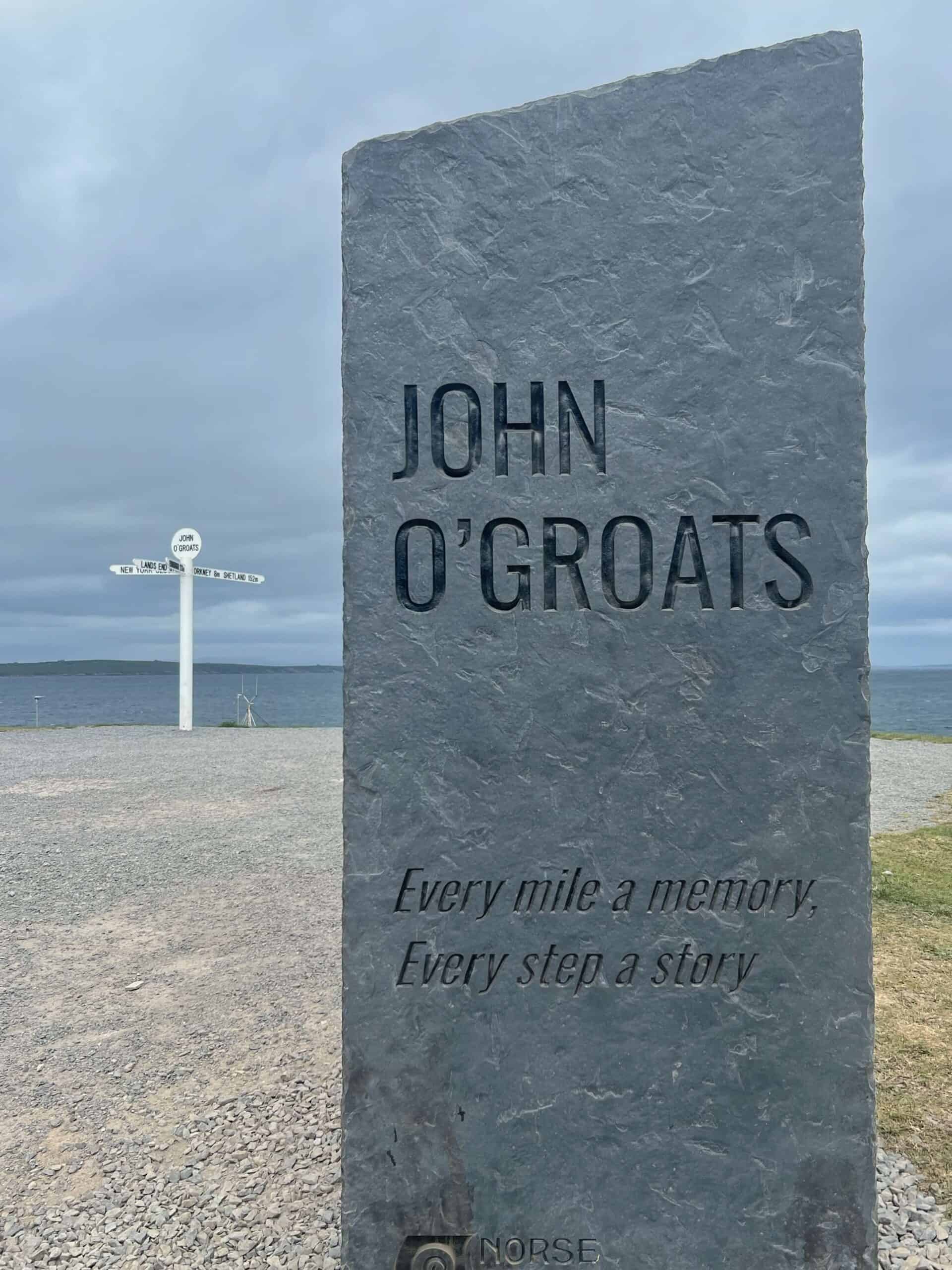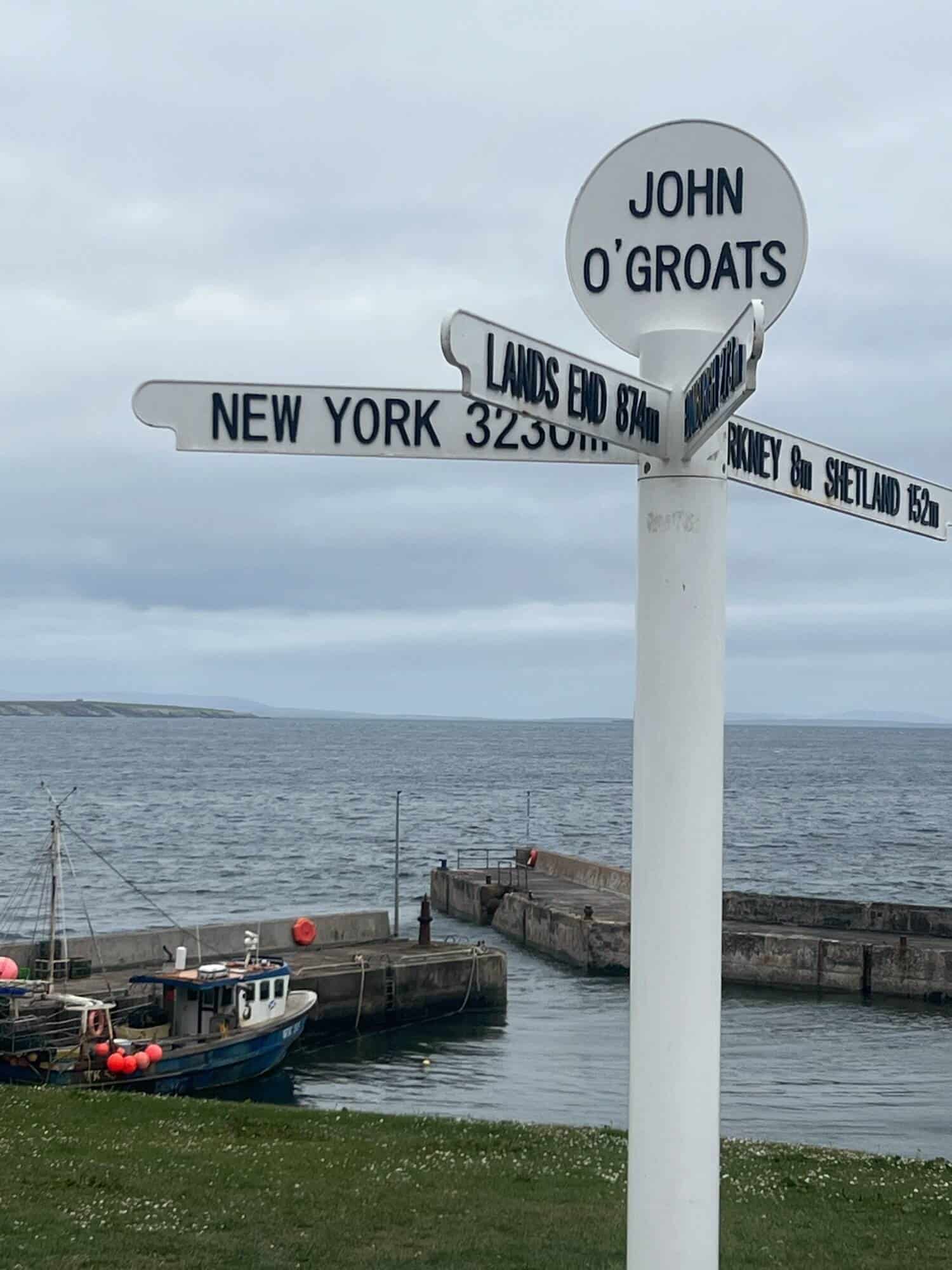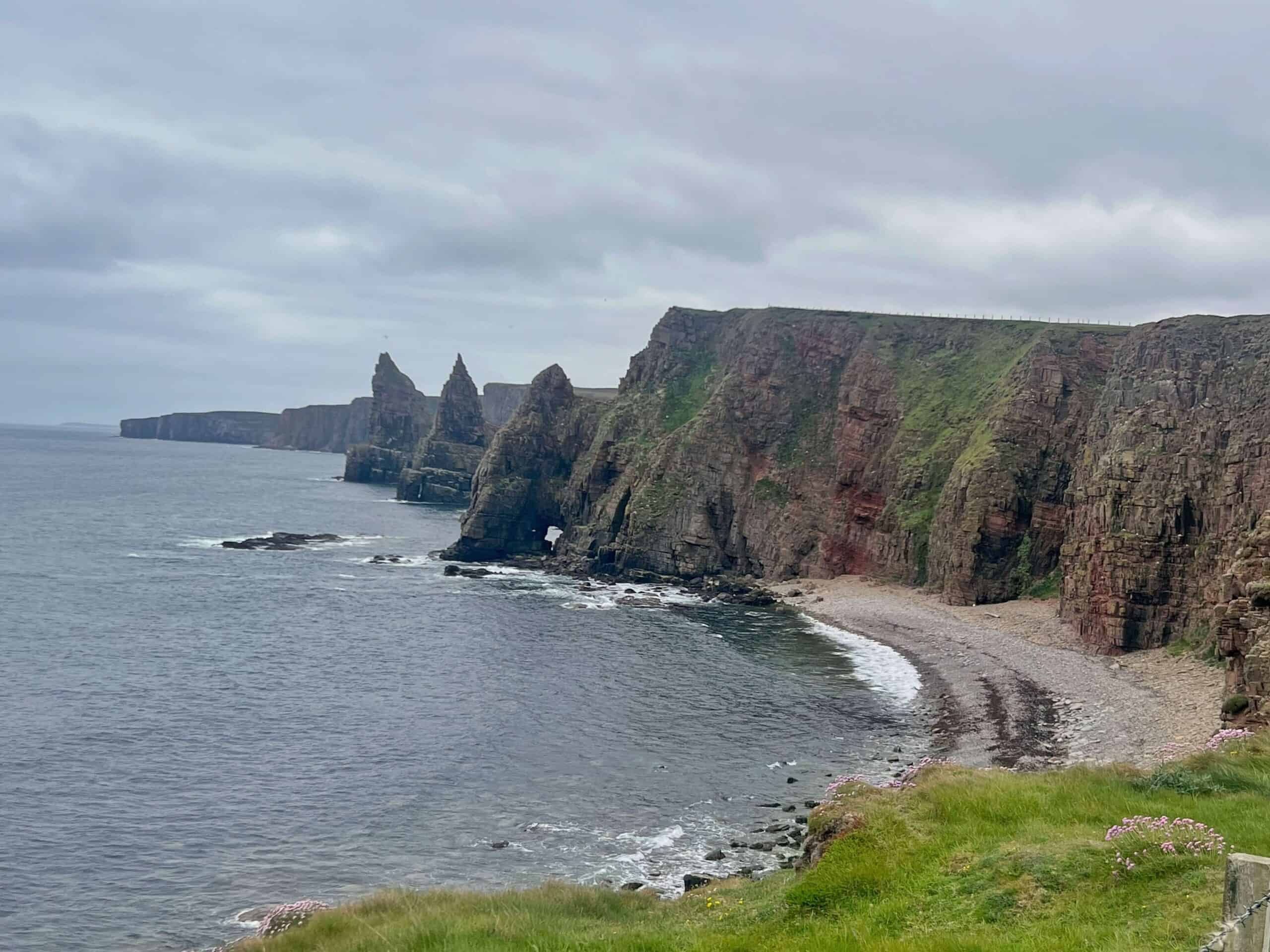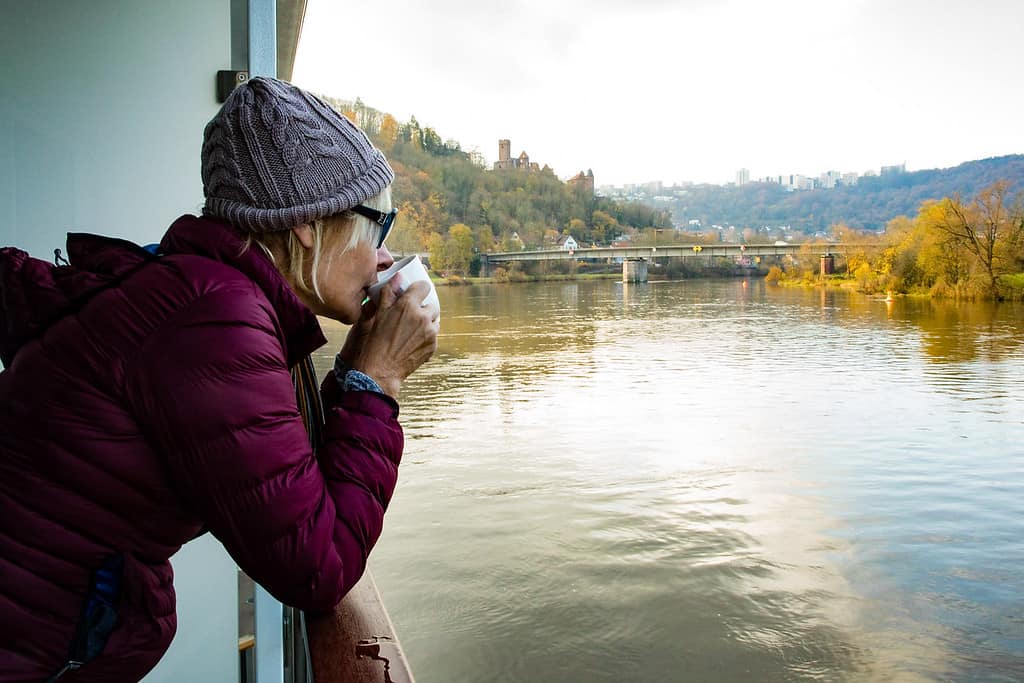Last Updated on September 20, 2025 by Sarah Wilson
No NC500 road trip feels quite complete without a stop at John O’Groats, one of the most famous points on the route. Although it’s not the northernmost point of mainland Britain (that honour goes to nearby Dunnet Head), it’s still the symbolic “end of the road” for many, especially for those travelling from Land’s End to John O’Groats.
Where Did the Name John O’Groats Come From?
The name dates back to the 15th century and a Dutchman named Jan de Groot, who operated a ferry service to Orkney. Legend has it that he charged one groat (a small silver coin) for the journey – hence the name John O’Groats. But most likely his name Jan de Groot simply got anglicized to “John o’ Groats,” and the place took on his name. So, the town is basically named after a local ferry operator from way back when!Things to Do in John o’ Groats Village
John o’ Groats, though a small village, offers a few unique activities right that capture its charm and history. You can start by posing by the iconic John o’ Groats signpost, a popular photo spot marking the northeastern tip of mainland Scotland.
The Colourful Buildings

What to Do Nearby
While John O’Groats itself is pretty compact, there’s plenty to explore nearby:Dunnet Head
A short drive away, this is the actual northernmost point of mainland Britain. The cliffs are a sanctuary for seabirds in season, and the vistas from the lighthouse are nothing short of dramatic.
Dunnet Head Lighthouse
Built in 1831 by Robert Stevenson, the grandfather of author Robert Louis Stevenson. It’s unmanned today, but still operational.Duncansby Stacks

Castle of Mey
Although we didn’t get a chance to visit, this former royal residence (belonging to the Queen Mother) is supposed to be charming, with lovely gardens and sea views. It’s only a 15-minute drive away and is open seasonally.Puffin Croft Petting Farm
We stayed at Puffin Cottage, which boasts a small and utterly charming petting farm right next door. Perfect for kids or anyone like me who enjoys a friendly animal encounter.
How To Get To John O Groats
We arrived by car (as do most NC500 travellers), but it is possible to reach John O’Groats by public transport, although it takes a bit of planning. There are regular trains and buses to Wick and Thurso, and from there, you can catch a local bus to John O’Groats. That said, services are limited and may not be available late, so it’s best for a day trip or overnight stay rather than a late-night arrival.Dining Dilemmas
One thing to be aware of: dining options in John O’Groats are few and close early. Our only option was to eat at the Seaview Hotel, but they don’t accept walk-ins, even when their dining room is empty. You must pre-book to eat there. With nothing else open, we ended up driving back to Wick (about 25 minutes away) to find somewhere still serving food. Not ideal after a full day of sightseeing!Can You See The Northern Lights From Dunnet Head Or The NC500?
Yes, it is possible — but rare, and highly dependent on: Time of year You need long, dark nights. The best chances are from late September to March, not in May, when we were there. Weather Clear skies are essential. Solar activity You’ll need a strong enough geomagnetic storm to push auroral activity far enough south to reach Scotland. Light pollution Dunnet Head is great in that regard. It’s remote and dark. Northern Scotland, especially areas like Caithness, Sutherland, and the Isle of Lewis, occasionally sees the aurora borealis — locals often call it the “Mirrie Dancers.” Sign up for Aurora Watch UK for details.Final Thoughts
John O’Groats and Dunnet Head make for a classic NC500 stop, offering a mix of coastal charm, windswept wilderness, and quirky history. Whether you’re ticking off the famous signpost, hoping to see a puffin, enjoying a sheep and donkey encounter at a petting farm, or simply admiring the view toward Orkney, it’s a memorable spot. Just be sure to book your dinner ahead, and don’t be fooled by that “northernmost point” claim without making the trip to Dunnet Head, too!More Posts On The NC500
How To Plan Your NC500 Trip Ullapool – A Lovely Spot To Stay On The NC500Save This Post For Later







